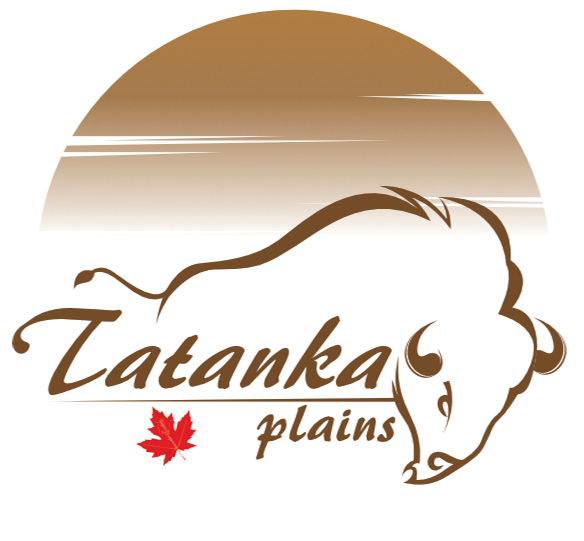
BISON HISTORY
EARLY HISTORY TO TODAY
The bison species is North America’s largest land animal that dominated the North American continent from the time of the ice age until the coming of the Europeans to this continent. Some believe that the early bison and man followed the land bridge connecting Asia and North America some 10,000 years ago. The saber-toothed tigers and the woolly mammoth couldn't successfully adapt to a warming climate, but bison found the grassy plains very accommodating.
The aboriginal people who made the migration over the same land bridge found the abundant supply of bison a very good reason to stay on this side of the bridge. These animals would provide them with food, shelter, tools and fuel for thousands of years. Over time the aboriginal people came to regard the bison as their special gift from the Great Spirit.
Strong winds of change came with the European settlers coming to North America. As settlers moved into the centre of the continent looking for land to farm, minerals to mine and towns to build, the natural home of both the native people and bison diminished. Historical accounts suggest there were 60 million bison in 1800, and in 1899 there were less than 1000 bison left.
The complete loss of a species was prevented by the efforts of ranchers, and conservationists in both Canada and the United States. Some herds were kept in national parks and individual ranchers kept some small herds privately. Gradually the population stabilized and began to grow slowly. In the 1980’s some ranchers who had been supplying the local markets began to have enough product to sell to outside markets. A new livestock industry began in earnest in the 1990’s when farmers and ranchers discovered that the public had an appetite for this heritage food. Bison numbers have expanded Increased.
The 2016 census reported 119,314 bison on 975 Canadian farms and ranches. This reflects an annual compounded growth rate of almost 5.0% since the bison census was first taken in 1996 when 42,235 bison were reported on 745 farms. It is estimated that as of January 1, 2017 there were almost 400,000 bison in North America of which were in tribal and ranched herds. In Canada, as of January 1, 2017 it is estimated that there were about 975 bison producers who owned almost 145,000 bison – truly a conservation success story.
Sustainable Agriculture
Sustainable agriculture is an important goal for Canada's bison producers. The reintroduction of bison to the Canadian plains by farmers, ranchers and conservation agencies has been a positive development for the environment. Following the near total destruction of Canada's bison herds in the late 19th century, millions of hectares of the native grassland habitat of he prairies was sacrificed to grain growing. The prairie sod, with its rich mosaic of animals and plans, was drastically altered to support the production of a handful of agricultural crops - primarily wheat.
Today, bison ranching plays an important role in the preservation of the last remnants of native grassland habitat on the prairies of providing an economically viable alternative to cultivation. Besides preserving the islands of natural grassland that have survived agricultural settlement, bison ranching encourages the return of farmed land to grassland. Over the past three decades, hundreds of Canadian grain and oil see farmers have entered the bison industry and for most, the decision to raise bison involves taking large tracts of land out of mono-crop cultivation and seeding a permanent cover of grass. Each year a bison cow an her calf require an average of four to sixteen hectares of grazing land depending on the weather and range conditions in any particular region of the country. With a population approaching 60,000 breeding bison cows in Canada, the nation's bison industry can take credit for the return of an amazingly vast expanse of formerly farmed land to pastureland.
The practice of converting formerly cultivated cropland to pastureland produces important environmental and economic benefits. Permanent grass cover prevents soil erosion and eliminates the need for chemical pesticides and herbicides. Pasture management does not require expensive cultivation and harvesting equipment such as air seeders and combines. A farm that shifts from grain and oil seed production to raising bison substantially reduces its consumption of non-renewable fossil fuels which are required to run farm machinery and are the source for the nitrogen fertilizer needed to grow crops on today's nutrient depleted farmlands.
Clearly the shift from cultivation to pastoral pursuits like raising bison substantially reduces farm operating and equipment costs. And because a growing population of consumers appreciates the nutritional advantages of bison meat, raising bison offers producers the opportunity to generate respectable financial returns. Bison ranching makes sense from an economic as well as environmental perspective.


